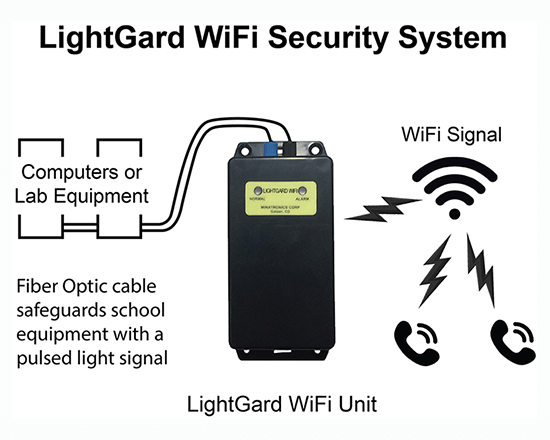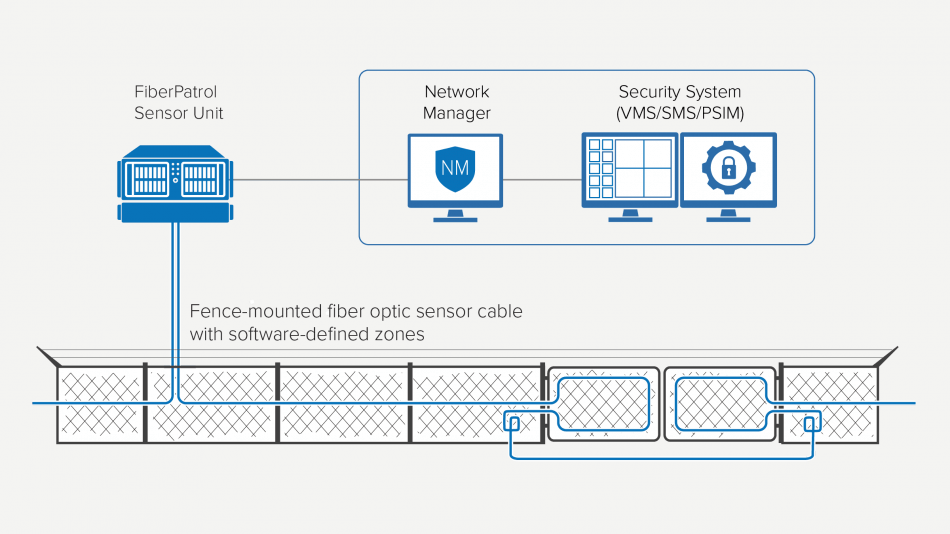Fiber Optic Security System: The Ultimate Solution for Your Property’s Protection Needs
Fiber Optic Security System: The Ultimate Solution for Your Property’s Protection Needs
Blog Article
Why Fiber Optic Security Equipments Are the Future of Security
The shift to fiber optic security systems notes a considerable advancement in the realm of defense, driven by their extraordinary data transmission capabilities and durability to exterior disturbances. These systems not only promote faster and much more reliable communication yet also offer an affordable remedy with decreased upkeep needs. As the landscape of safety develops alongside emerging modern technologies such as AI and IoT, the potential for fiber optics to improve and redefine safety and security infrastructures ends up being significantly apparent. The implications of these developments increase vital concerns concerning the future of safety actions and their effectiveness in an ever-changing environment.
Advantages of Fiber Optic Systems
One of the key benefits of fiber optic systems is their premium bandwidth capability, which helps with the transmission of large volumes of information over cross countries without considerable loss. This characteristic is specifically valuable for protection applications that call for the continual tracking and transfer of high-definition video feeds, sensing unit data, and other vital information. Fiber optics can fit the growing needs of contemporary safety systems, making sure that data continues to be undamaged and reputable.
Additionally, fiber optic cable televisions are much less vulnerable to electromagnetic disturbance, which can be a significant issue in settings with numerous digital tools. This resistance enhances the honesty of the data being transmitted, thereby minimizing the threat of data violations or system failures. Fiber optic systems are naturally much more safe and secure than conventional copper wires, as tapping right into a fiber optic line without detection is extremely challenging.
The sturdiness of fiber optic cables likewise adds to their allure. They are immune to environmental aspects such as dampness and temperature level changes, lowering maintenance expenses and raising system longevity. In general, these benefits position fiber optic systems as a robust and effective selection for modern safety and security facilities, guaranteeing reliable and protected information transmission.
Boosted Information Transmission Speed

The capacity to send huge quantities of data quickly assists in the smooth assimilation of high-def video clip feeds and advanced analytics. Safety and security systems can now refine and assess details in real-time, improving response times and situational understanding. Furthermore, fiber optic connections support longer transmission distances without destruction of signal quality, making them optimal for extensive safety networks.
The raised rate of fiber optic systems not just enhances the efficiency of safety and security operations but also reduces latency. This is particularly important in crucial circumstances where timely decision-making can avoid safety and security breaches or mitigate possible risks. As organizations remain to prioritize safety and security and performance, the need for quick and reputable data transmission will certainly solidify fiber optic systems as a keystone of contemporary safety and security infrastructure.
Resistance to Disturbance
Fiber optic safety systems continually demonstrate extraordinary resistance to electromagnetic disturbance, an important benefit in atmospheres prone to digital learn the facts here now noise. Unlike traditional copper wires, which can be adversely impacted by electromagnetic areas, radio frequency interference, and various other forms of electric disturbance, fiber optic cable televisions use light to transfer information. This intrinsic building makes sure that the signals stay clear and unchanged, regardless of bordering electronic task.
The use of glass or plastic fibers in fiber optic technology develops a barrier versus interference, enabling for dependable information transmission even in tough situations such as commercial facilities, city areas with high electronic website traffic, or locations near radio towers. This particular significantly minimizes the likelihood of signal deterioration or loss, making fiber optic systems specifically suitable for protection applications where stability and precision of information are critical.
Additionally, this resistance to disturbance enhances the total performance and integrity of safety systems, ensuring that tracking and sharp systems operate flawlessly. In a globe where safety and security is significantly endangered by sophisticated technologies, the durability of fiber optic systems sticks out as a pivotal feature, strengthening their condition as a crucial component of modern safety framework.
Cost-Effectiveness With Time
Significant cost savings can be achieved over time with the execution of fiber optic safety and security systems. While the preliminary investment may seem higher contrasted to traditional copper-based systems, the long-lasting monetary benefits emerge with minimized operational and maintenance prices (fiber security). Fiber optic wires are naturally more sturdy and much less prone to ecological aspects, which equates to lower replacement and repair expenditures over their life-span
Additionally, fiber optic systems require much less power to operate, which additionally decreases energy prices. Improved information transmission abilities permit for fewer repeaters and amplifiers, decreasing equipment investment and simplifying setup procedures. The scalability of these systems also adds to cost-effectiveness, as companies can expand their security infrastructure without sustaining significant extra expenditures.
One more aspect to think about is the enhanced effectiveness in surveillance and reaction abilities that optical fiber offer. Improved real-time information transmission can cause quicker case response times, potentially mitigating losses and responsibilities connected with safety and security breaches. In amount, the lasting benefits of fiber optic security systems not only validate the preliminary expense yet additionally place them as a monetarily prudent selection for companies looking for robust defense remedies.

Future Technologies in Safety
Progressing modern technologies are set to change safety systems, integrating expert system (AI) and artificial intelligence to boost risk detection and reaction capabilities. These innovations will certainly permit protection systems Discover More Here to examine huge amounts of information in real-time, identifying patterns and abnormalities that indicate prospective risks. This proactive approach will enable faster decision-making and a lot more effective event actions.
In addition, the unification of the Web of Things (IoT) is paving the method for interconnected safety gadgets, supplying thorough monitoring and surveillance. Smart sensors can pass on details concerning ecological modifications, while automated signals can notify safety workers instantly of dubious activities.
Furthermore, the advancement of biometric modern technologies will certainly even more boost protection systems. Face recognition, finger print scanning, and retina identification are ending up being more advanced, providing layers of authentication that are hard to bypass.
Verdict
In verdict, fiber optic protection systems stand for a considerable improvement in try these out defense technology, offering unequaled information transmission speed, resistance to electromagnetic disturbance, and lasting cost-effectiveness. As the demand for advanced safety services remains to grow, the integration of optical fiber with arising innovations such as AI, IoT, and biometrics will further boost protection frameworks (fiber security). The mix of these innovations will make certain a more safe and receptive setting, solidifying fiber optics as a cornerstone of future safety systems
Report this page